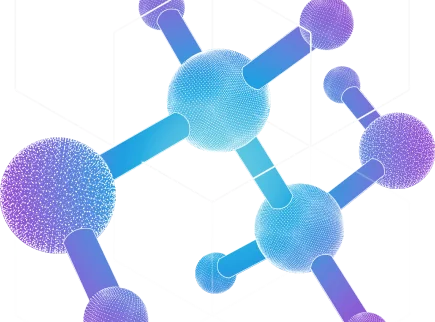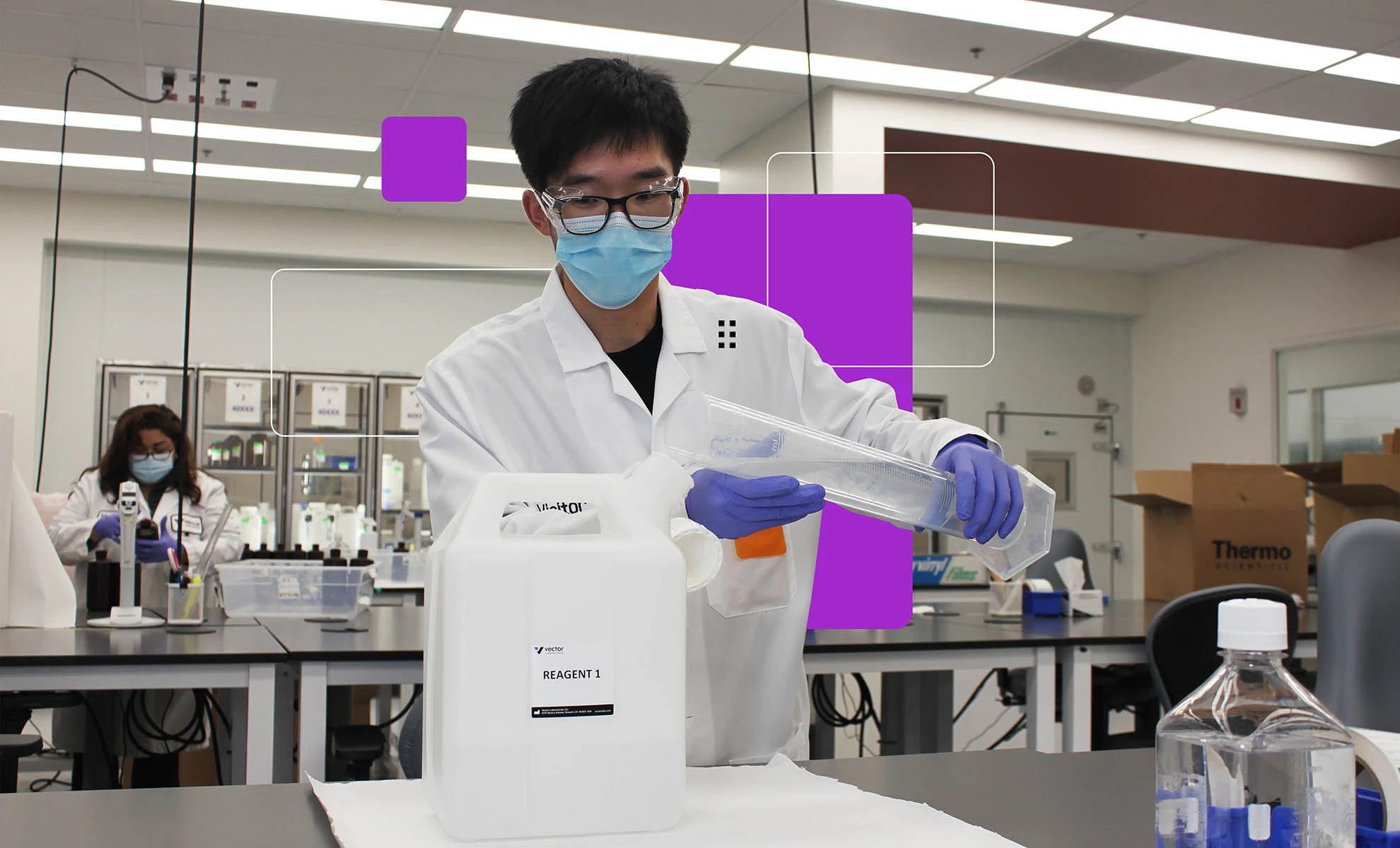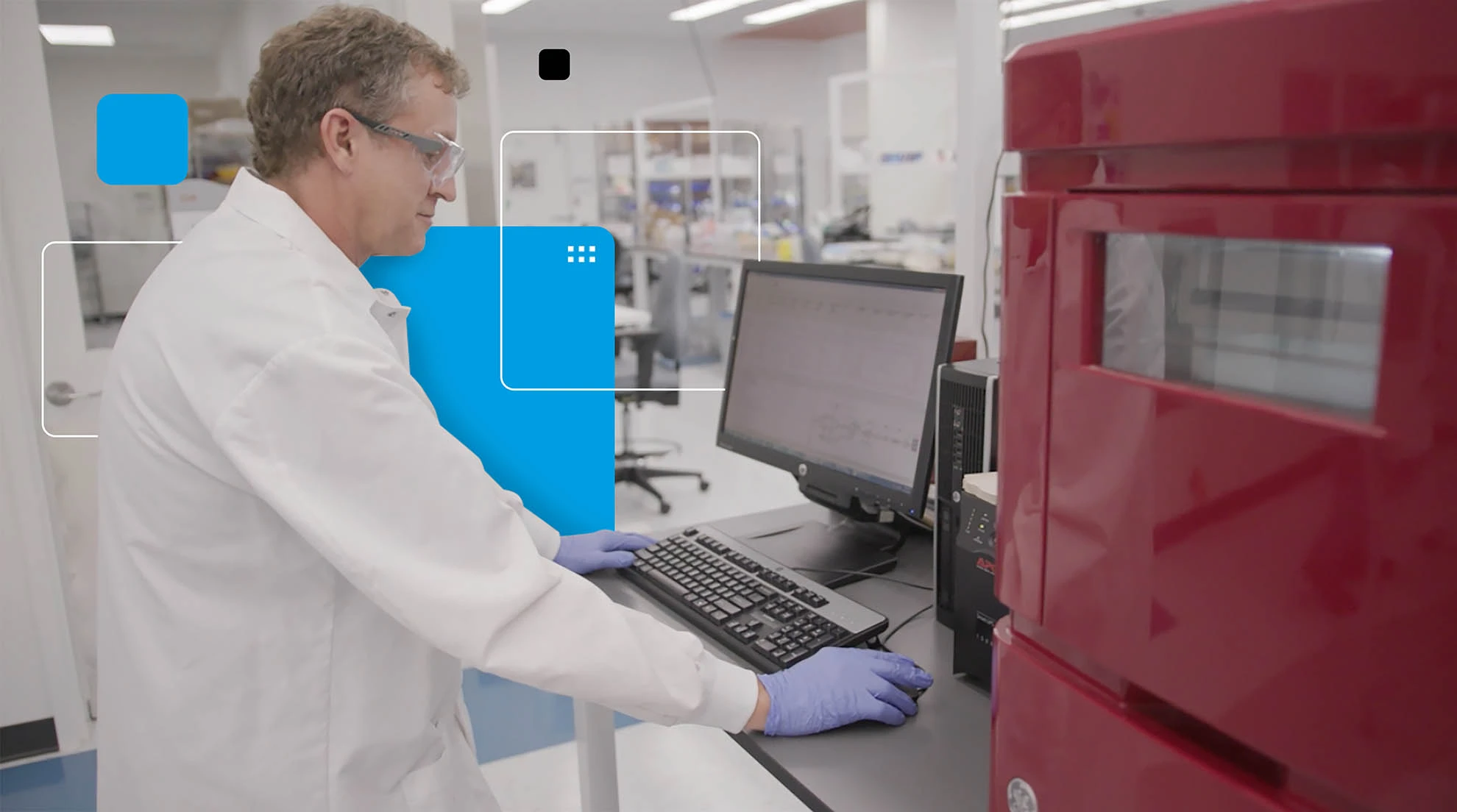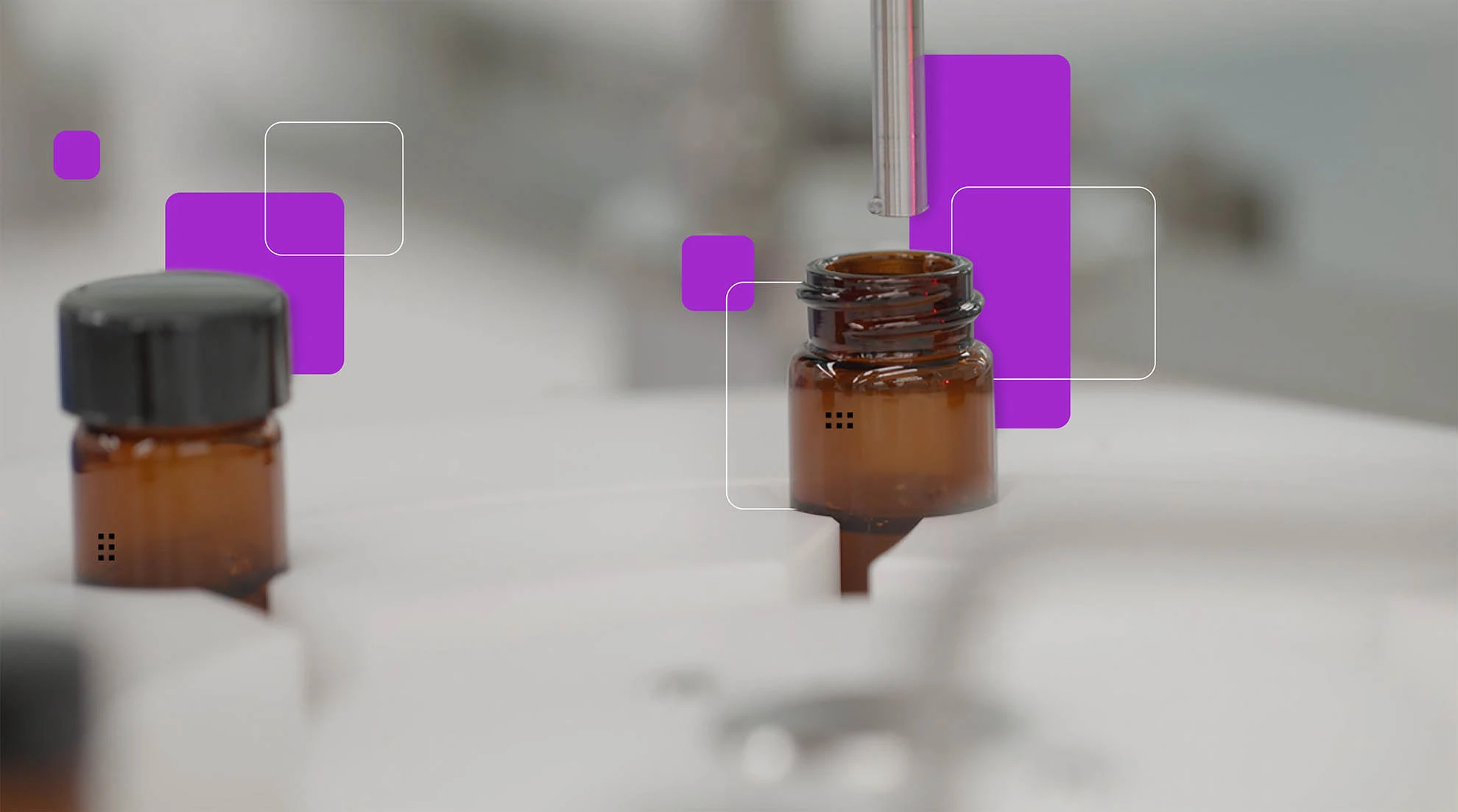Introducing BioDesign
Building and delivering bioconjugate linkers
Deliver your therapeutic’s potential with proprietary linker architectures and chemical biology expertise.

Custom manufacturing to meet your needs
From linker design and synthesis, bioconjugate development and manufaturing, and enhanced visualization and detection solutions, our collaborative and flexible approach will help you move forward, with impact.
How can we help you?

I need large quantities of catalog products
As your projects and processes scale, standard catalog product sizes can become a limiting factor. Unscrewing caps from a 2 ml tube and pipetting into a larger reservoir/container is a drain on time and resources. Beyond inconvenient, each transfer step introduces the possibility of error or contamination. Connect with us to discuss custom volume and packaging that is right sized for your needs.
I’m looking to develop a unique product formulation
You may start by working with an existing stock product, but as you integrate into your processes you determine that custom specifications are required for your application. Or you may have mapped out from the start the exact requirements that are required for your product development. Perhaps you are looking to gain a competitive advantage with a product reformulation. Connect with us to discuss how we can meet your specifications and performance characteristics.


I need custom bioconjugation
Whether you are looking for a custom antibody tag conjugate or a partner to help with custom bioconjugation of your biomolecule, our team of experts is here to discuss options and strategies for attaining maximum yield and performance. Connect with us to discuss how we can support your bioconjugation needs.
I want to transform my manufacturing capabilities
You may be looking for a manufacturing partner to help you scale your resources as your organization grows. Or perhaps you are looking to enhance your capabilities with access to a team of experts in proteomics and glycomics. We have the expertise, solutions, and collaborative initiative to help you push further. Connect with us to discuss how we can support you every step of the way..

Move forward with impact
Vector Laboratories is here to support you, every step of the way. We show up with a can-do, personally invested approach to service. Backed by 45+ years in proteomics and glycomics innovation, our custom solutions are helping organizations around the world advance their business.
Supporting you every step of the way. We show up with a can-do, personally invested approach to service. Vector Laboratories offers a culture of service and a passion to deliver to help you move forward.
A meaningful legacy. Backed by 45+ years in proteomics and glycomics innovation, our custom solutions are helping organizations around the world advance their business.
A partnership you can trust. Vector Laboratories creates partnerships where your needs come first, so that you move forward with greater impact. Our ISO 9001:2015 certified facility ensures the quality, safety, and efficiency of products, services, and systems.
From questions to advances. Vector Laboratories enables organizations to answer questions that fuel improvement and innovation.
A name you can trust. Vector Laboratories is cited in more than 350,000 scientific publications and our products are used in Standard Operating Procedures in labs and organizations around the world.
FAQs
Custom product development is the process of developing or manufacturing products to meet your specifications and needs. This can either be through new product development or enhancing functionality of an existing catalog product. Both approaches are managed through a custom development cycle in accordance with an agreed Statement of Work.
Every project starts with a conversation. We want to understand your needs, your desired outcomes, any challenges you face, and how our expertise can help you attain your goals. We agree on the best solution for your needs, including requirements, specifications, and timelines through a Statement of Work. Connect with us today to get started.
Our team of experts works on your custom product development, with your Account Manager keeping you updated at every step of the way. When your product has passed QC and is ready, our Customer Service and Shipping teams will work with you to ensure on-time delivery. Should you encounter any issues, our team of technical experts is available for any troubleshooting help you need along the way.
Our off-the-shelf catalog products, also referred to as stock products, are mass produced to industry standard specifications and supplied as convenient milligram or milliliter individual units. For researchers or companies considering a custom project, a unit or two of a stock product, may help determine proof of concept. As the study develops, modifications to a stock product in terms of concentration, formulation, different volume, alternative conjugate, different QC specificiations, etc., may be required. At this point the conversation would commence regarding the need for a custom product to be made to exacting specifications tailored to the defined project.
Of course, not all custom products arise from catalog products. Using bioconjugation as an example, in many instances you, the customer, would supply one or more of the molecules to be conjugated. The output is a unique, custom-made bioconjugate that is not available as an off-the-shelf product.
Liter volumes or gram amounts, for example, are standard requests for some custom products. Our manufacturing facility has the capacity, and in-house capability, to make significant quantities of reagents.
Obtaining the precise product required for a project, with consistent performance characteristics between lots, and the possibility of volume scale up as demand necessitates, are hallmark advantages of custom product development. Working with an established manufacturer allows for regular delivery scheduling with the flexibility to adjust volume requirements as needed. Recurring forecasts and scheduling of custom product enables on-time, just-in-time delivery.
In addition to our custom manufacturing and OEM options, we do work with companies to optimize products to meet their requirements based upon an existing catalog product. Connect with us to discuss your particular situation and needs.
Let's start a conversation
We are here to help. Connect with us to learn how we can support your specific needs.

